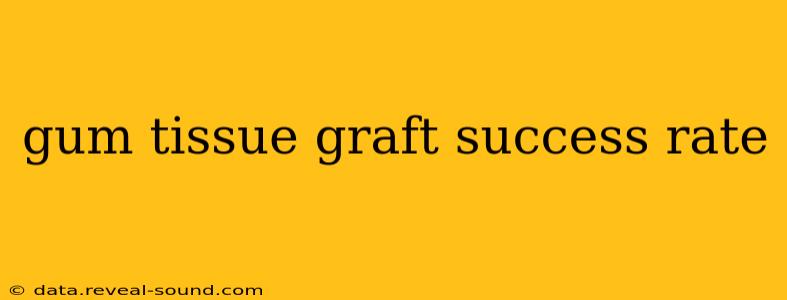Gum recession, that frustrating retreat of gum tissue from the teeth, affects millions. Fortunately, a gum tissue graft can often restore both aesthetics and oral health. But what are the chances of success? Understanding the factors influencing the success rate of a gum tissue graft is crucial for anyone considering this procedure. This comprehensive guide explores the success rate, influencing factors, and what to expect post-surgery.
What is a Gum Tissue Graft?
A gum tissue graft is a periodontal procedure where a piece of gum tissue is taken from one area of the mouth (donor site) and transplanted to another area (recipient site) where gum recession has occurred. This helps to cover exposed tooth roots, improve gum line aesthetics, and potentially prevent further recession. There are several types of gum tissue grafts, including:
- Free gingival graft: Tissue is harvested from the palate (roof of the mouth).
- Pedicle graft: Tissue is partially detached and swung into the recipient site.
- Connective tissue graft: A thin layer of connective tissue is harvested from the palate, leaving the overlying epithelium intact. This is a popular choice due to its often quicker healing time and superior aesthetic results.
What is the Success Rate of a Gum Tissue Graft?
The success rate of a gum tissue graft is generally high, typically ranging from 85% to 95%. However, it's crucial to understand that this is an average, and individual results can vary. Several factors can influence the final outcome.
What Factors Affect Gum Tissue Graft Success?
Several factors can influence the success rate of a gum tissue graft, impacting both the graft's survival and the overall aesthetic result. These factors include:
Patient's Overall Health:
- Smoking: Smoking significantly reduces the success rate. Nicotine constricts blood vessels, hindering blood flow to the graft site and slowing healing. Patients are often advised to quit smoking several weeks before and after surgery.
- Diabetes: Poorly controlled diabetes can impair wound healing and increase the risk of infection, negatively affecting graft success.
- Immunosuppression: Individuals with weakened immune systems may have a higher risk of complications and a lower success rate.
Surgical Technique and Skill:
The surgeon's experience and skill significantly influence the outcome. A meticulous surgical technique helps ensure proper blood supply to the graft and minimizes trauma to the tissues.
Post-Operative Care:
Careful adherence to post-operative instructions is crucial for healing. This includes maintaining good oral hygiene, avoiding smoking, and following the prescribed medication regimen.
Recipient Site Conditions:
The health of the recipient site plays a role. The presence of infection or inflammation can compromise graft survival.
How Long Does it Take for a Gum Graft to Heal?
Healing time varies depending on the type of graft and individual patient factors. However, most patients experience initial healing within 2-4 weeks, with complete healing taking several months. During this period, some discomfort, swelling, and slight bleeding might occur.
What are the Risks and Complications of a Gum Tissue Graft?
While generally safe, gum tissue grafts carry some potential risks and complications, including:
- Infection: Infection is a potential risk, although it's relatively uncommon with proper post-operative care.
- Bleeding: Some bleeding is expected immediately after surgery, but excessive bleeding should be reported to the dentist.
- Pain: Discomfort is common, usually managed with over-the-counter pain relievers.
- Graft Failure: Although rare, the graft may not fully survive or integrate.
- Recession recurrence: While the graft aims to prevent further recession, some recession can still occur over time.
How Can I Increase My Chances of a Successful Gum Tissue Graft?
Choosing an experienced periodontist is paramount. Discuss your overall health, smoking habits, and any concerns you have. Follow all post-operative instructions diligently, maintain excellent oral hygiene, and attend all follow-up appointments.
Conclusion
The success rate of a gum tissue graft is generally high, but individual results can vary. By understanding the factors that can influence the outcome and following your dentist's instructions carefully, you can maximize your chances of a successful procedure and restore your smile's health and beauty. Remember, open communication with your dentist is key to a positive experience.
